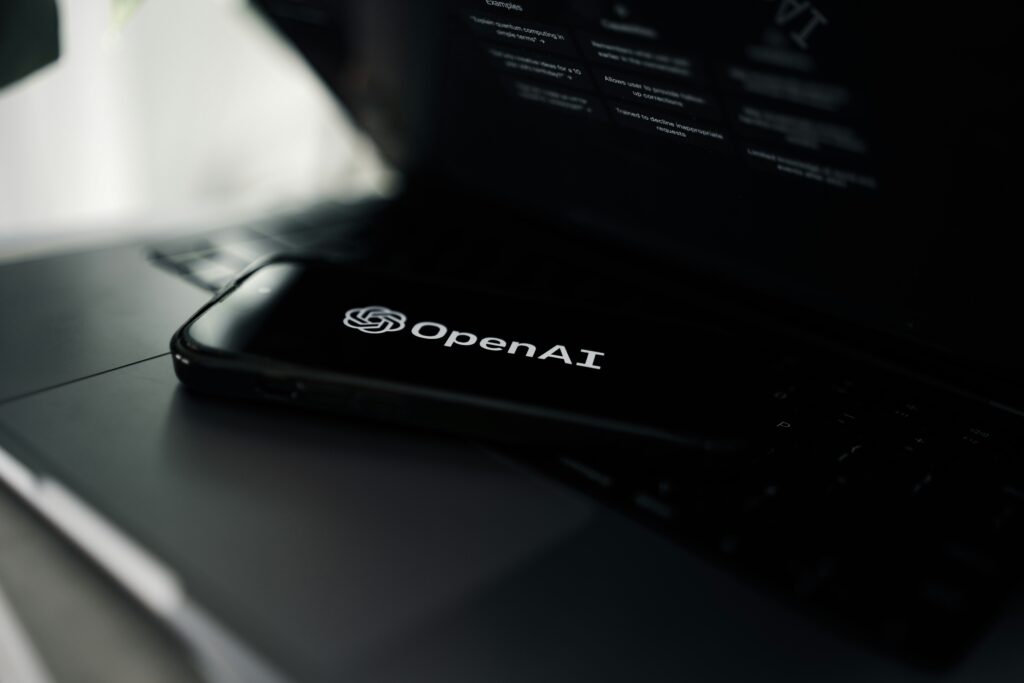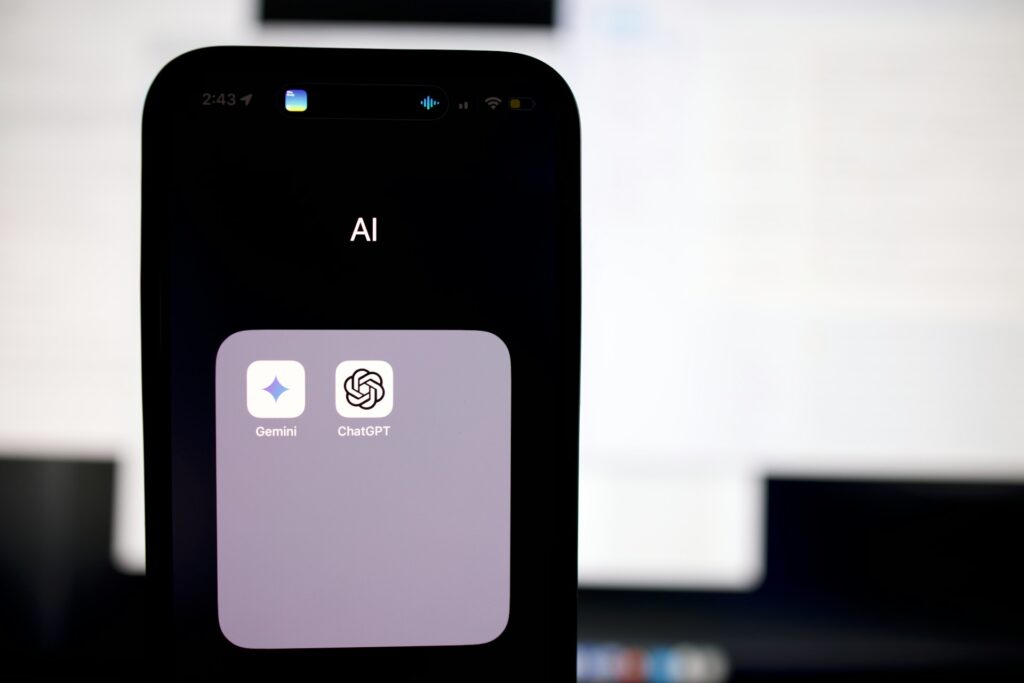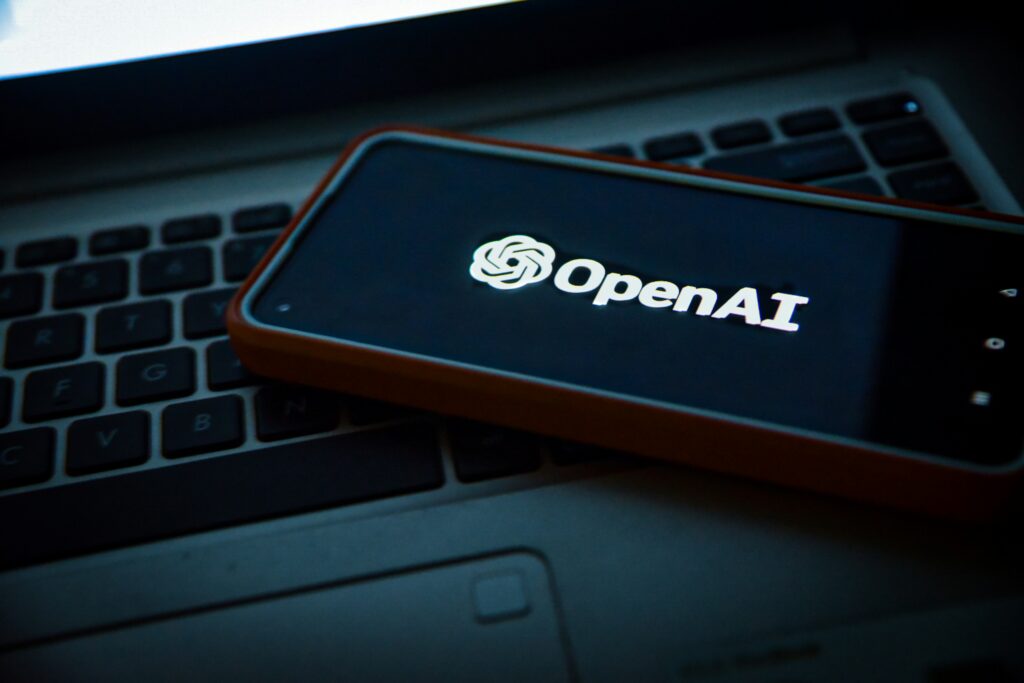Introduction to ChatGPT

ChatGPT, developed by OpenAI, represents a notable advancement in the field of artificial intelligence, specifically in natural language processing. As an AI-powered language model, it is designed to generate coherent and contextually relevant text that resembles human communication. This sophisticated system leverages deep learning techniques, incorporating vast datasets to produce responses that are often indistinguishable from those generated by a human. The core functionality of ChatGPT lies in its ability to understand and generate language, making it a versatile tool for a myriad of applications.
The underlying architecture of ChatGPT, which is based on the transformer model, enables it to analyze patterns and relationships within the text inputs it receives. Through this process, it learns to anticipate the next word or phrase based on the preceding context, allowing for fluent conversation flow. Key capabilities of ChatGPT include answering questions, providing explanations, and even creating content ranging from articles to poems. Its ability to engage in meaningful dialogue has led to its adoption across various sectors, including education, customer service, and content creation.
Underlying Technology
The foundational technology that underpins ChatGPT is the GPT (Generative Pre-trained Transformer) architecture, which is a notable innovation in the field of artificial intelligence. This architecture is primarily built on deep learning and relies heavily on neural networks to process and generate human-like text. Neural networks are computational models designed to simulate the way a human brain operates, allowing the system to learn from vast amounts of data through interconnected nodes or neurons.
The process begins with the ‘pre-training’ phase, during which the model absorbs a vast dataset comprised of diverse internet text. This expansive dataset provides the necessary context and knowledge, enabling the model to understand linguistic patterns, concepts, and nuances inherent in human communication. By analyzing this wealth of information, the model learns to predict the next word in a sentence, thereby developing a comprehensive understanding of language structure and usage.
Once the pre-training phase is complete, the model undergoes a ‘fine-tuning’ phase. This step is crucial as it optimizes the model for specific tasks such as responding to user queries or participating in conversations. It involves adjusting the pre-trained neural network to align closely with the goals of the application, enhancing its ability to generate coherent and contextually relevant responses.

The significance of employing a vast dataset during this training phase cannot be overstated, as it allows the model to generate text that is not only coherent but also contextually appropriate across various subjects. Furthermore, the adaptability of the GPT architecture allows it to be retrained and updated as new data becomes available, ensuring that the technology remains flexible and relevant in addressing evolving conversational needs.
Training Process
The training process of ChatGPT consists of two main phases: pre-training and fine-tuning. During the pre-training phase, the model learns to predict the next word in a sentence. This is accomplished by using a vast corpus of text data, collected from diverse sources such as books, articles, and websites. The model analyzes billions of examples to understand grammar, facts, and contextual usage of language. By engaging in this predictive learning, ChatGPT captures a plethora of linguistic patterns, enabling it to generate coherent and contextually relevant responses.
The architecture of ChatGPT is based on transformer networks, which play a critical role in processing language. This type of neural network is adept at handling long-range dependencies and context, which are essential for understanding the intricacies of human language. The pre-training stage equips ChatGPT with a robust foundation for grasping syntax, semantics, and various styles of writing, thus enhancing its content generation capabilities.

Following the pre-training phase, the model undergoes fine-tuning. This stage fine-tunes the model with targeted datasets that reflect specific tasks or domains. Human feedback is integral to this process, as it helps shape the model’s ability to align its outputs with user expectations. Fine-tuning involves iterative training, where responses are evaluated and adjusted based on quality assessments, thereby improving the model’s capability to generate more relevant and accurate replies.
Overall, the training process of ChatGPT is essential for enabling the model to understand and produce human-like text. Through comprehensive pre-training and strategic fine-tuning, ChatGPT evolves into a sophisticated conversational agent that caters to the needs and inquiries of users effectively.
How ChatGPT Generates Responses
ChatGPT, a notable language model developed by OpenAI, operates on a sophisticated mechanism that enables it to generate coherent and contextually relevant responses to user inputs. Central to this process is the model’s ability to understand context and intent, which is achieved through extensive training on diverse datasets. These datasets encompass a wide breadth of topics, allowing the model to learn linguistic patterns, nuances, and contextual clues that facilitate coherent conversation.
When a user inputs a query, ChatGPT employs its trained algorithms to interpret the input’s context. This involves analyzing the immediate words and sentence structure while considering prior interactions to ascertain the user’s intent. The model then engages in a predictive process where it evaluates the most probable sequence of words that would follow the user’s input, thereby generating a response that aligns with the expected conversational flow.
To enhance the variability and richness of the responses, ChatGPT utilizes algorithms such as temperature and top-p sampling. The temperature parameter, which can be adjusted, influences the randomness of the generated output. A lower temperature yields more deterministic and focused responses, while a higher temperature opens up the possibility for more creative and varied answers. Conversely, top-p sampling narrows down the selection to the most probable words, ensuring that the generated responses remain relevant and contextually connected. This balance between creativity and relevance is crucial as it allows ChatGPT to craft answers that are not only interesting but also appropriate to the query at hand.

Through this intricate interplay of context understanding, predictive modeling, and sampling algorithms, ChatGPT effectively generates responses that engage users while remaining aligned with conversational norms and expectations.
Reinforcement Learning from Human Feedback (RLHF)
Reinforcement Learning from Human Feedback (RLHF) is a pivotal technique that significantly enhances the functionality of ChatGPT. This approach integrates human insights into the learning process of the model, fostering an environment where AI-generated responses can be continually refined and improved. Through RLHF, human reviewers play an essential role, in evaluating, ranking, and providing feedback on the outputs generated by the model. This process not only aids in fine-tuning the responses but also aligns the AI’s performance with user expectations and preferences.
The RLHF methodology starts with the initial training of the model on vast text-based datasets. However, this foundational training is enhanced through the contributions of human reviewers who assess the quality and relevance of the responses provided by ChatGPT. Reviewers examine various outputs in terms of clarity, coherence, and overall accuracy, often comparing them against a set of predetermined criteria. As a result, a feedback loop is established; the model learns from these evaluations and adjusts accordingly, thus progressively improving its performance.
Using this feedback, developers can fine-tune ChatGPT’s decision-making processes, ensuring that the AI gravitates towards producing better-quality responses. The continuous loop of evaluation and refinement emphasizes the importance of human insight in AI development, enabling the model to adapt to dynamic user needs and expectations. By integrating human feedback into the learning framework, RLHF not only enhances the interaction quality but also reinforces the ethical and successful deployment of AI systems. This approach underscores the evolution of AI, revealing how human participation in the learning phase can yield a more sophisticated, accurate, and user-friendly outcome.
Applications of ChatGPT
ChatGPT has emerged as a versatile tool, paving the way for numerous applications across various domains. One of the most prominent uses of ChatGPT is in writing assistance. It can help users draft articles, essays, and blog posts, thereby improving productivity and offering valuable insights. Writers can leverage their capabilities to generate ideas, structure content logically, and refine their language. This has proven invaluable for both professional and amateur writers looking to enhance their output.
Another significant area where ChatGPT excels is in code generation and debugging. Developers can utilize the model to produce code snippets, produce templates, and troubleshoot existing code. This application not only streamlines the coding process but also aids in bridging the knowledge gap for learners who are just beginning their programming journey.
Customer service is also significantly transformed by the integration of ChatGPT. Organizations use the model to provide immediate responses to customer queries, ensuring higher levels of engagement and satisfaction. The ability of ChatGPT to handle multiple inquiries simultaneously reduces wait times and offers efficient support for businesses.
In addition to these applications, virtual assistants powered by ChatGPT can manage personal schedules, remind users of important tasks, and answer everyday questions. This application enhances productivity and offers users more control over their day-to-day activities. In educational settings, ChatGPT serves as an effective tool for tutoring and personalized learning, adapting to students’ needs by providing explanations, assessments, and practice problems.
Furthermore, brainstorming sessions benefit from ChatGPT, which can generate a plethora of ideas on diverse topics, allowing teams to think creatively and push the boundaries of traditional brainstorming. Lastly, its capabilities extend to language translation, enabling seamless communication across different languages and cultures. This makes ChatGPT an invaluable asset in globalized interactions, enhancing understanding and collaboration. Overall, the applications of ChatGPT illustrate its versatility and efficacy in various fields.
Limitations of ChatGPT
Although ChatGPT represents a significant advancement in artificial intelligence and natural language processing, it is essential to recognize its inherent limitations. One notable limitation is its propensity to generate incorrect or nonsensical answers. Despite being trained on a vast dataset, ChatGPT does not possess real-world knowledge or comprehension in the way humans do. As a result, it may fabricate information or provide misleading responses, especially when confronted with ambiguous queries.
Moreover, ChatGPT exhibits sensitivity to input phrasing, which can lead to varied outputs even when the prompts are slightly altered. This inconsistency arises from the model’s reliance on patterns in the data it was trained on, making it susceptible to nuances in language that can dramatically change the interpretation of a question. Such behavior can be problematic, particularly in critical applications where accurate information is paramount.
Another crucial limitation of ChatGPT is its lack of deeper reasoning abilities. While it can simulate conversation by generating coherent text based on patterns, it does not understand context or possess reasoning skills that enable it to draw conclusions from facts or engage in critical thinking. This results in a failure to provide comprehensive, insightful responses to complex queries or dilemmas that require nuanced understanding.

It is also important to acknowledge that ChatGPT reflects the biases present in its training data. As it learns from information available on the internet, societal biases may inadvertently be woven into the fabric of its responses. Consequently, users may encounter outputs that unintentionally reinforce stereotypes or exhibit partiality, thereby raising ethical concerns regarding the deployment of such AI models.
Ethical Considerations
As artificial intelligence continues to evolve, the ethical considerations surrounding tools such as ChatGPT have come to the forefront of discourse. One significant challenge is the risk of misinformation. Given its capacity to generate realistic text, ChatGPT can inadvertently create or propagate false information. This poses a serious threat, particularly when users rely on AI for accurate data, leading to a potential erosion of trust in digital communications.
Another critical issue is the inherent bias present in AI models, including ChatGPT. These biases can stem from the training data used, which may contain prejudiced or skewed perspectives. Consequently, the output generated by ChatGPT could perpetuate stereotypes or misrepresent marginalized communities. Addressing this issue is not merely an ethical obligation; it is essential to ensure that AI technology serves all individuals fairly and equitably.

Additionally, the potential for inappropriate use of ChatGPT raises significant ethical concerns. Its ability to generate convincing text can be exploited for malicious purposes, such as creating misleading advertisements, impersonating individuals, or even crafting harmful propaganda. This underscores the pressing need for safeguards that can prevent misuse while encouraging responsible engagement with AI technology.
To navigate these ethical challenges, it is crucial for developers and stakeholders to implement robust frameworks that ensure the responsible deployment of ChatGPT. Ongoing improvements should be made to refine the algorithms and address biases, bolstering the model’s reliability. Moreover, public discourse on these ethical considerations is vital in shaping policies and guidelines that govern the use of AI tools. By proactively addressing these ethical implications, we can better harness the benefits of ChatGPT while minimizing potential harms.
Future Developments in ChatGPT
OpenAI has laid out a strategic roadmap for the future development of ChatGPT, with an emphasis on continual updates designed to enhance safety, accuracy, and versatility. As the landscape of artificial intelligence evolves, the organization is committed to refining ChatGPT to meet the increasing demands and expectations of users. One of the pivotal goals is to improve safety measures to ensure that the model can handle a wider array of queries responsibly, allowing it to engage in more nuanced and sensitive discussions. This ongoing effort targets not only the technical capabilities of ChatGPT but also the ethical implications of its use in diverse applications.
Accuracy remains a top priority as well. OpenAI intends to enhance the model’s ability to provide reliable information by incorporating more robust training methodologies and a broader context. With the advancement of AI research and technology, incorporating user feedback and real-world data will play a crucial role in making ChatGPT not only a more effective communication tool but also a more trustworthy source of information in various domains, including education, customer service, and mental health support.

Moreover, the integration of ChatGPT with other tools and systems presents a significant opportunity to enhance its functionality. This could involve partnerships with software platforms that utilize ChatGPT to improve user engagement through conversational interfaces. For example, integrating the model within productivity tools could facilitate streamlined workflows, thus enhancing efficiency and user experience. As advancements in APIs and other collaboration technologies become available, the potential for cross-functional applications of ChatGPT will expand, further solidifying its role in the future of digital interactions. By focusing on these future developments, OpenAI aims to position ChatGPT as a cornerstone of interactive AI technology.
Conclusion
Throughout this exploration of ChatGPT, we have delved into its mechanisms, applications, and the transformative impact it has on communication. As a versatile tool powered by sophisticated artificial intelligence, ChatGPT allows users to harness the capabilities of natural language processing for diverse functions, ranging from content creation to language translation. Its ability to generate human-like responses marks a significant advancement in how we interact with technology.
Nevertheless, the power of ChatGPT brings with it several important considerations. As we integrate this technology into daily use, it is imperative to acknowledge the potential for misuse and the ethical dilemmas it can present. For instance, the risk of misinformation and the challenges of maintaining authenticity in communication are two pivotal issues that need addressing. Users must be educated on the responsible use of this AI tool to maximize its benefits while mitigating any adverse effects.
The implications of AI technologies like ChatGPT extend beyond individual interactions. They contribute to a broader discourse on how artificial intelligence reshapes our communication landscape. As we continue to rely on these tools, it raises fundamental questions about trust, privacy, and the validity of human connections. Effective management of AI applications will play a crucial role in ensuring they serve as enhancements to human communication rather than replace it.
In light of the discussions presented, it is clear that while ChatGPT is a powerful resource with myriad applications, vigilance, and ethical considerations must guide its integration into our lives. As we navigate the evolving relationship between humanity and technology, we must remain proactive in addressing the challenges posed by AI advancements to ensure sustainable and meaningful communication.